Life
A World Of Worlds
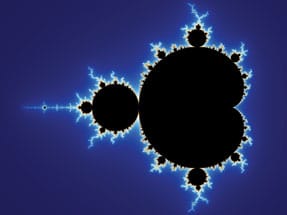
Fractal patterns have no beginning and end. The whole exists in parts and a part exists in the whole. The universe is in you and you are in the universe.
| As far out as our modern tele-scopes can glimpse, billions of stars group together to form galaxies, galaxies bundle together to form clusters, and clusters clump into super clusters. They all seem to hide a message, at least some think, coded in their unique pattern called fractals. Some believe it is a message from the cosmic sculptor for sentient beings like us, while others think it is the ultimate truth expressed in geometric language for us to explore. Some see beauty in the design, while others seek truth.
When cosmologists attempted to map the configuration of the universe by recreating past events and extracting information from the radiations, they found that the galaxy distribution in the universe followed a certain fractal pattern. Fractals are like a whole world in a smaller scale embedded inside a world of increasing complexity. They are the smaller versions of the relatively bigger and similar structures — a reduced copy of the original. In the pinnacle or creation, it seems that the forces of nature left out an important clue for us to hunt down the secrets of the universe. Are fractals the road map to reality? Do they symbolize a deliberate attempt by nature or do they just happen to exist in the eyes of the beholder? Surprisingly, fractals can be seen not just in celestial objects, but in terrestrial objects too. For example, look at a sunflower or broccoli. You will see that a smaller copy of the whole is embedded successively and, if you keep looking, you can find smaller and smaller copies. The object in larger scale is composed not just of different parts, but by tiny whole ones. The unique nature of fractals is that smaller versions of an object are continuously repeated to generate the bigger object in a manner that the small and big preserve all the features. The whole exists in parts and a part exists in the whole. Fractal patterns have no beginning and end. They are small in big, big in small, part in whole, and whole in part. The enlightened might say, there is, in fact, no such distinction as alpha and omega — the universe is in you and you are in the universe.
Fractals could be described as the finite holding the infinite. From snowflakes to shorelines, from clouds to seashells, from blood vessels to ocean waves, all these seemingly irregular shapes harbor a beauty beneath their intricate system. The fractal patterns are everywhere — in human lungs, kidneys and in the rhythm of the heart — in the essence of life. Could they be the heartbeat of the cosmos as well? The Sloan Digital Sky Survey (SDSS) is one of the most ambitious and significant projects in the history of astronomy. The goal of this mission is to create a true picture of the universe by mapping millions of galaxies and quasars that govern our cosmos. When the data was released on the distribution of thousands of galaxies they studied, the results were clear and compelling. Most physicists agreed that on a relatively small scale the galaxy distribution follows a fractal pattern. Like in the humble sunflowers, one can witness how the fractals unfold in the majesty of the swirling galaxies. The infinitely repeated similarity is the key to fractal generation. In nature, this is expressed in meek objects to mighty galaxies. Some consider it a universal truth. It is not just the aesthetic feature of the fractals that makes them significant, but they are the key to understanding order in disorder or beauty in anarchy, wherein chaos disappears to create serenity.
Scientists and mathematicians often bury the beauty of nature in abstract mathematical symbols, anything from alpha to omega. Traditionally, they love to describe smooth and definite patterns with their equations and shy away from complex and irregular patterns. In that sense, Benoit Mandelbrot, who died recently, was a radical mathematician. He went on to explore the hidden beauty beneath seemingly chaotic systems. He proposed that the complexity we observe in nature can be generated by iterations of a simple entity over a large number of repetitions. In other words, the fundamental equation that represents the smallest link could repeat endlessly to create a complex system. The iterations can have fractal dimensions instead of the usual whole number dimensions. Fractal geometry ideas are used in a variety of fields from geology to cosmology and from medicine to the stock market. Mandelbrot went on to explore the underlying geometry and mathematics in varieties of systems that have been ignored largely by conventional mathematicians. His work was initially confined to smaller and familiar terrestrial objects and it has been extended to systems that create chaos, such as weather or stock markets. Though the prediction of the behavior of such systems is still in its infancy, it is not as far fetched as once thought. Fractals reveal that unpredictability and complexity are part of nature, and that they are not undesirable.
Engineers can model wonderful structural designs with common geometric shapes, such as lines, circles etc., and with software they can generate 3D models of the same. A mathematician can create a set of equations that would describe this model. Ask them to model a cauliflower or broccoli? They would probably have stumbled, at least until the work of Mandelbrot became an established branch of geometry. The Fractal Geometry of Nature is a mathematical text that addresses many of the mathematical puzzles that involve fractals, published in 1983 by Mandelbrot, who began his career as a researcher at IBM and later became a faculty member at Yale University. What is the best approach to decipher the secrets of the universe? Mathematical equations as the classical physicists thought or pictures and patterns? Mandelbrot favored the second choice. While physicists like Isaac Newton thought God was a mathematician and believed that the secrets of nature are encoded in mathematical equations, fractals teach us that the blueprint of reality lies in shapes and molds. Also, that chaos and complexity are to be celebrated rather than ridiculed, because they are the pure manifestation of an underlying simple truth. The near uniform radiation left over from the birth of the universe suggests that it began with a void and featureless state. How did the formation of galaxies or distribution of matter in the universe follow a unique pattern? Without a proper theory to explain it, researchers are like acrobats without a net. As the Sloan Digital Sky Survey continues its efforts to cover more galaxies, many express optimism about a clear picture that will eventually emerge. This could lead us to a higher level of comprehension about the cosmos and even more importantly about ourselves. At present, it is not clear whether fractal patterns can be observed in galaxy distributions of any distance in the universe. But a small team of physicists, including Francesco Sylos Labini, of the Enrico Fermi Centre in Rome, and Luciano Pietronero, of the University of Rome, argue that recent data shows the universe continues to look fractal as far out as our telescopes can reach.
If large-scale fractals do exist throughout, what could be the implications? Like the galaxies that exhibit fractals, our universe could be pictured like a Russian nesting doll, which metaphorically denotes the recognizable relationship of “object-within-similar-object.” Our universe could be residing in a bigger version of its own and many smaller versions of it could be embedded within our own universe. Does this fractal nature of the universe make sense? Some cosmologists believe that even the near featureless state of our cosmos in the beginning — the one currently so considered — was preceded by something simpler still, perhaps little more than rapidly expanding empty space. In a process spanning billions of years this fundamental similarity multiplied numerous times to create our present state of the complex universe. If the fractal hierarchies are ubiquitous, as some like to think, we have no choice but to be confined within a series of universes with increasing magnitude and intricacy — a different version of the multiverse that has already its own niche in modern cosmology. The infinite hierarchy of worlds within worlds may not soon become the dominant theory in astronomy. Yet, it is nothing unfamiliar to Hindu philosophers. During the discourse in Kuskshetra with Krishna, Arjuna saw the entire universe, divided in many ways, but standing as (all in) One (and One in all) in the body of the god of gods. The Upanishads proclaim that the self is one, though it appears to be many. This self is the truth and this true self is exactly the same as Brahma, which is omnipresent and is manifested nature (prakriti) and unmanifested consciousness. This self is not the body, nor is it the mind, nor is it the ego. With this self that is the same in all things, there can be no sense of “I” or “mine,” as all is one and the same. The slow and continuous evolution of intelligence and complexity from single cells could also be rooted in a similar process that began with cosmic creativity, which in turn began much before. The ability of fractals to create intricacy from relatively simple states is probably evolving our own creativity and intelligence. Perhaps, fractals, which are veiled underneath the clouds, mountains and coastlines and also in the mighty cosmos, are carrying out their objectives to reach the pinnacle of creation even as we read this. We will no doubt ultimately discover the law of fractals, because its dance is the same everywhere — in you and in the cosmos. |


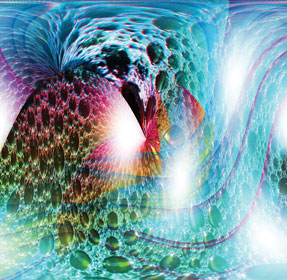
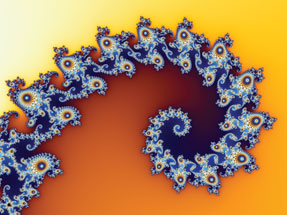
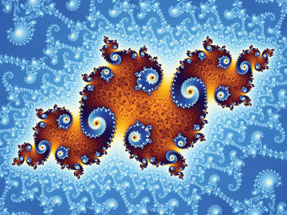
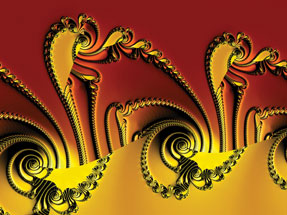
You must be logged in to post a comment Login